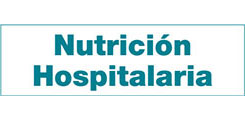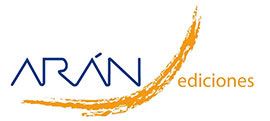Trabajo Original
In vivo assessment and characterization of lactic acid bacteria with probiotic profile isolated from human milk powder
Ariana Rodríguez Arreola, Josué R. Solís Pacheco, Monique Lacroix, Edgar Balcazar López, Rosa Elena Navarro Hernández, Flavio Sandoval-Garcia, José Alfonso Gutiérrez Padilla, Elisa García Morales, Blanca Rosa Aguilar Uscanga
 Número de descargas:
12548
Número de descargas:
12548
 Número de visitas:
7156
Número de visitas:
7156
 Citas:
3
Citas:
3
Compártelo:
Introduction: breast milk (MH) contains nutrients and bioactive compounds for child development, including probiotic bacteria, which contribute to intestinal maturation. This benefit accompanies the individual until adulthood. There are new methods such as spray drying that give this compound a good conservation without loss of microbiota. Objective: the aim of this study was to analyze the viability of lactic acid bacteria isolated from human milk with probiotic potential after the spray drying process, as well as to evaluate the possible adhesion in the colon of mice of the Balb/C strain after feeding them powdered human milk and a commercial formula milk. Method: we isolated and identified the presence of lactic acid bacteria with possible probiotic potential in powdered human milk using the MALDI-TOF MS technique. Powdered human milk and a commercial formula milk were fed to mice of the Bald/C strain for 14 weeks. Glucose level and weight were measured in the mice. The feces were collected to verify the presence of lactic bacteria. The mice were sacrificed and their intestines were weighed, isolating the lactic acid bacteria both from the intestines and from the feces. The strains isolated from mice fed human milk were evaluated for their probiotic potential, analyzing their ability to inhibit pathogens, resistance to pH, temperature, adhesion, and hydrophobicity. Results: the presence of Lactobacillus fermentum LH01, Lactobacillus rhamnosus LH02, Lactobacullis reuteri LH03, and Lactobacillus plantarum LH05 in powdered human milk was identified. All strains showed a possible probiotic profile due to the ability of bacteria to resist low pH, bile salts, and exposure to gastric enzymes, as well as their hydrophobicity and self-aggregation capacity, and their failure to show hemagglutination or hemolysis activity in a culture medium rich in erythrocytes. We observed that the consumption of powdered human milk prevented weight gain and constipation in mice. Conclusions: after spray drying, strains with possible probiotic potential may be preserved in human milk. The consumption of powdered human milk with probiotic bacteria prevents constipation and weight gain in mice, when compared to those fed a commercial formula milk.
Palabras Clave: Human milk. Probiotic. Spray drying. Lactic acid bacteria. Probiotic activity.
DOI: 10.1053/j.gastro.2009.01.075
DOI: 10.1038/srep40466
DOI: 10.1093/jn/135.5.1308
DOI: 10.1097/MPG.0b013e3182333f18
DOI: 10.1016/j.phrs.2012.09.001
DOI: 10.1177/0890334407303945
DOI: 10.3168/jds.2009-2643
DOI: 10.1016/j.idairyj.2013.03.006
DOI: 10.1046/j.1365-2672.2002.01782.x
DOI: 10.1016/S0260-8774(00)00228-4
DOI: 10.1080/07373937.2016.1141781
DOI: 10.2460/javma.2001.218.669
DOI: 10.22354/in.v0i0.703
DOI: 10.1016/j.foodcont.2013.09.055
DOI: 10.1007/s00203-008-0408-0
DOI: 10.1046/j.1365-2672.2000.00845.x
DOI: 10.1046/j.1365-2672.2003.01915.x
DOI: 10.1128/AEM.66.6.2605-2612.2000
DOI: 10.1016/j.jfda.2018.01.002
DOI: 10.1016/j.ijbiomac.2018.05.233
DOI: 10.1007/s00217-007-0632-x
DOI: 10.1046/j.1365-2672.2003.01915.x
DOI: 10.1016/j.tifs.2011.01.009
DOI: 10.1111/1471-0307.12038
DOI: 10.1186/1475-2891-6-8
DOI: 10.1017/S1368980016001117
DOI: 10.1136/fn.86.3.F178
Artículos Relacionados:
Artículo Especial: Aspectos dietoterapéuticos en situaciones especiales del paciente oncológico. prebióticos y probióticos, ¿tienen cabida en la terapia nutricional del paciente oncológico?
M.ª José Sendrós Madroño
Revisión: Beneficios inmunológicos de la leche humana para la madre y el niño. revisión sistemática
María José Aguilar Cordero , Laura Baena García , Antonio Manuel Sánchez López , Rafael Guisado Barrilao , Rafael Hermoso Rodríguez , Norma Mur Villar
Trabajo Original: Impacto de la pasteurización/liofilización en el contenido disponible de inmunoglobulinas en leche humana madura. estudio de aplicación en bancos de leche humana en hospitales
Jorge Castro Albarrán , Rosa Elena Navarro Hernández , Josué R. Solís Pacheco , Itza Carmina Salazar Quiñones , Griselda G. Macías López , Juan Carlos Barrera De León , Blanca Rosa Aguilar Uscanga
Trabajo Original: Beneficios a corto, medio y largo plazo de la ingesta de leche humana en recién nacidos de muy bajo peso
Bibiana Chinea Jiménez , Yumana Awad Parada , Antonio Villarino Marín , Miguel Sáenz de Pipaón
Trabajo Original: Papel de los prebióticos y los probióticos en la funcionalidad de la microbiota del paciente con nutrición enteral
María Dolores Ballesteros Pomar , Elena González Arnaiz
Trabajo Original: Concentration of ghrelin and leptin in serum and human milk in nursing mothers according to the type of feeding
Alfredo Larrosa Haro , Edgar Manuel Vásquez-Garibay , Elizabeth Guzmán-Mercado , Nelly Carolina Muñoz-Esparza , Samuel García-Arellano , José Francisco Muñoz-Valle , Enrique Romero-Velarde
Trabajo Original: Influencia de la dieta de mujeres mexicanas sobre la calidad nutricional y la presencia de microorganismos benéficos en la leche humana
Jesús Alonso Amezcua López , Josué Raymundo Solís Pacheco , Elisa García Morales , José Alfonso Gutiérrez Padilla , Adelaida Sara Minia Zepeda Morales , Eusebio Angulo Castellanos , Miguel López Mincitar , Kelvin Fabricio Flores Arévalo , Ariana Rodríguez Arreola , Blanca Rosa Aguilar Uscanga
Trabajo Original: Real-world study in infants fed with an infant formula with two human milk oligosaccharides
Enriqueta Román , José Manuel Moreno Villares , Francisco Domínguez Ortega , Alfonso Carmona Martínez , Leandro Picó Sirvent , Luz Santana Sandoval , Jose Casas Rivero , Ayham Alshweki , Colin Cercamondi , Samir Dahbane , Maria Luisa Vidal Guevara
Trabajo Original: Nutrición y microbiota en población pediátrica. Implicaciones sanitarias
Ana Isabel Jiménez-Ortega , Rosa María Martínez García , Marta Velasco Rodríguez-Belvis , Ana Belén Martínez Zazo , María Dolores Salas-González , Esther Cuadrado-Soto
Trabajo Original: Simbiosis en el tracto gastrointestinal humano
Francisco Guarner
Trabajo Original: Impacto de la pandemia por SARS-CoV-2 en un banco de leche humana
Patricia Miranda Romera , Manuela Peña Caballero , Estefanía Martín Álvarez , Laura Serrano López , José Antonio Hurtado Suazo
Revisión: Efecto de la suplementación con omega-3 durante la gestación y la lactancia sobre la composición de ácidos grasos de la leche materna en los primeros meses de vida: una revisión narrativa
Daniza Puca , Pamela Estay Castillo , Carina Valenzuela , Yasna Muñoz
Artículo Especial: Controversia actual sobre el papel crítico de los ácidos grasos poliinsaturados de cadena larga, araquidónico (ARA) y docosahexaenoico (DHA), en el lactante
Cristina Campoy , Aida Maribel Chisaguano Tonato , Andrea de la Garza Puentes , Miguel Sáenz de Pipaón , Elvira Verduci , Berthold Koletzko , Inés González Casanova , Elvira Larqué , Rodrigo Valenzuela , José Manuel Moreno Villares , Ángel Gil
Revisión: Revising concepts of artificial nutrition in contemporary surgery: from energy and nitrogen to immuno-metabolic support
Trabajo Original: A mixture of Lactobacillus plantarum CECT 7315 and CECT 7316 enhances systemic immunity in elderly subjects. A dose-response, double-blind, placebo-controlled, randomized pilot trial
Trabajo Original: El consumo del probiótico Lactobacillus plantarum CECT 7315/7316 mejora el estado de salud general en personas de edad avanzada
Trabajo Original: Estabilidad de la capacidad antioxidante y pH en leche humana refrigerada durante 72 horas: estudio longitudinal
Revisión: Evidence on the benefits of probiotics for preterm infants
Ana Maria Campos Martinez , Carmen Elizabeth Fernández Marín , Aida Ruiz López , Isabel Cubero Millán , José Uberos Fernández
Revisión: The effect of probiotics on the serum lipid levels in non-obese healthy adults with hyperlipidemia: A systematic review and meta-analysis of randomized controlled trials
Kaiwen Sun , Zhenzhu Liu , Hongyan Wang
Trabajo Original: Is there a relationship between oral hygiene and nutritional status in peritoneal dialysis patients?
Sonia López-Cisneros , Ailema González-Ortiz , Samuel Ramos-Acevedo , Ángeles Espinosa-Cuevas
Revisión: Effect of the use of probiotics in the treatment of children with atopic dermatitis; a literature review
Artículo Especial: Third Jesús Culebras Lecture - Molecular Biology and Clinical Nutrition; where do we stand and where do we go?
Artículo Especial: Probióticos en las enfermedades hepáticas
Artículo Especial: Aplicaciones clínicas del empleo de probióticos en pediatría
Revisión: Intestinal microbiota; relevance to obesity and modulation by prebiotics and probiotics
Revisión: Lactobacillus Paracasei subsp. Paracasei F19; a farmacogenomic and clinical update
Trabajo Original: Probióticos y enterocolitis necrotizante del prematuro; to NEC or not to NEC?, ésta es la pregunta
Trabajo Original: Effects of human milk on blood and bone marrow cells in a malnourished mice model; comparative study with cow milk
Trabajo Original: Effect of probiotics on human blood urea levels in patients with chronic renal failure
Trabajo Original: Nueva guía de práctica clínica sobre nutrición enteral del recién nacido de muy bajo peso al nacimiento; segunda parte
Trabajo Original: The effect of Saccharomyces boulardii in patients eligible for liver transplantation
Trabajo Original: Are fat acids of human milk impacted by pasteurization and freezing?
Revisión: Alimentación funcional para aliviar desórdenes gastrointestinales asociados a trastornos del espectro autista: Una revisión sistemática
Julián Herrera Mejía , Arnulfo Ramos-Jiménez , Florinda Jiménez Vega , Rocío Campos Vega , Aaron F. González Córdova , Abraham Wall-Medrano
Trabajo Original: Determination of cholesterol in human milk: an alternative to chromatographic methods
Revisión: Probiotics in the treatment of infantile colic: a meta-analysis of randomized controlled trials
YanPing Liu , Dejian Ma , XiYan Wang , YunZhi Fang
Trabajo Original: Influencia del perfil de las donantes en la bacteriología pre- y pospasteurización de la leche humana donada
Marta Padín Fontán , Montserrat Martín-Forero Maestre , Iván Rodríguez Otero , Cristina Durán Fernández-Feijoo , María Suárez Albo , Ana Concheiro Guisán
Revisión: Bifidobacterium longum subsp. infantis CECT 7210 (B. infantis IM-1®) muestra actividad frente a patógenos intestinales
José Antonio Moreno-Muñoz , Manel Martín-Palomas , Jesús Jiménez López
Revisión: Treating asthma patients with probiotics: a systematic review and meta-analysis
Qiwei Xie , Jiatian Yuan , Yaoweng Wang
Revisión: Variación en el aporte de los biocomponentes inmunoglobulina A y lactoferrina en la leche humana después de la pasteurización Holder
Luis Alberto Bello Durán , Daniela Vanegas Otalvaro
Trabajo Original: Production of snack bar enriched with paraprobiotics grown in banana peel medium, nutritional, sensory and quality parameters
Merve Tokpunar , K. Esen Karaca Çelik , Murat Baş , Hakan Kuleaşan , Aylin Korkut Altıntaş
Trabajo Original: A randomized double-blind controlled clinical trial demonstrating efficacy of different probiotic strains on serum lipids and glycemic biomarker
Gözde Okburan , Murat Baş , Sultan Ogmen
Trabajo Original: Can consumption of traditional fermented foods protect against Hashimoto's thyroiditis?
Fatma Özgüç Çömlek , Muslu Kazım Körez
Trabajo Original: Effects of probiotic supplementation on blood lipids ın hypercholesterolemic obese patients: a randomized, double-blind, placebo-controlled pilot trial
Sibel Bulut , Seray Kabaran
Revisión: La microbiota intestinal y su modulación: impacto en la salud digestiva y en el sistema inmunitario
Guillermo Álvarez Calatayud , Rosaura Leis Trabazo , Elena Seoane Reula , Ascensión Marcos Sánchez
Artículos más populares
Revisión: Inteligencia artificial generativa ChatGPT en nutrición clínica: avances y desafíos
ChatGPT y otras herramientas de inteligencia artif...
Revisión: Suplementación con micronutrientes y sus beneficios: ¿por qué y cuándo?
Introducción: los micronutrientes participan en la...
-
Licencia creative commons: Open Access bajo la licencia Creative Commons 4.0 CC BY-NC-SA
https://creativecommons.org/licenses/by-nc-sa/4.0/legalcode




